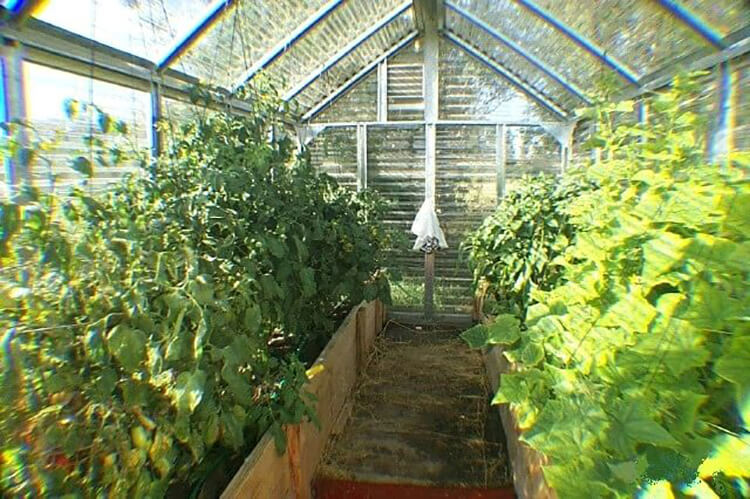If you’re looking to make money from your love of gardening, a greenhouse can be a great investment. Greenhouse gardening allows you to grow a wide variety of plants year-round, which can be sold for profit. However, it’s important to have a plan in place and know the best practices for profitable greenhouse gardening. In this article, we’ll provide a detailed guide on how to make money with a greenhouse.
Introduction
Greenhouse gardening has become increasingly popular among hobbyists and commercial growers alike. Not only is it an excellent way to extend the growing season, but it can also be a profitable business venture. However, to be successful in this venture, you need to understand the basics of greenhouse gardening for profit.
Benefits of Greenhouse Gardening for Profit
One of the main advantages of greenhouse gardening is the ability to grow plants year-round. This means that you can produce crops during the off-season when prices are high. Additionally, growing crops in a greenhouse allows you to have complete control over the environment, which can result in higher yields and better-quality produce.
Choosing the Right Location for Your Greenhouse
The location of your greenhouse is critical to its success. You need to choose a location that receives plenty of sunlight and is sheltered from the wind. You also need to consider the type of soil and drainage in the area, as well as the availability of water and electricity.
Planning Your Greenhouse Business
Before you start growing crops in your greenhouse, you need to develop a business plan. This should include a budget, marketing plan, and production schedule. You should also research your local market to determine which crops are in demand and what prices they command.
Choosing the Right Plants to Grow
The key to profitable greenhouse gardening is selecting the right plants to grow. You should consider the demand for the crop, the yield potential, and the market price. Some profitable crops for greenhouse gardening include tomatoes, cucumbers, lettuce, and herbs.
Soil and Fertilizer Needs

The soil in a greenhouse needs to be well-draining and rich in nutrients. You may need to add compost or fertilizer to the soil to ensure optimal plant growth. You should also test the soil regularly to monitor its nutrient content.
Managing Pests and Diseases
Greenhouse gardening can be challenging because pests and diseases can spread quickly in an enclosed environment. You need to implement a pest and disease management plan that includes regular monitoring and appropriate treatments.
Watering and Irrigation
Proper watering and irrigation are critical for the success of greenhouse gardening. You need to ensure that your plants receive the right amount of water without becoming waterlogged. This may require a combination of hand watering and automated irrigation systems.
Temperature and Humidity Control
Maintaining the right temperature and humidity levels in a greenhouse is essential for plant growth. You may need to invest in heating and cooling systems to regulate the temperature, as well as a dehumidifier to control humidity levels.
Harvest

Harvesting and Selling Your Crops
Once your crops are ready for harvest, it’s important to do it properly to ensure their quality and longevity. Most crops should be harvested early in the day when they are at their freshest. You should also handle them gently to avoid damaging the produce.
Once your crops are harvested, you need to find a market for them. Consider selling your produce at local farmers’ markets, to restaurants, or directly to consumers. You can also create an online presence and sell your products through e-commerce platforms.
Marketing Your Greenhouse Business
Marketing is essential for any business, including greenhouse gardening. Consider creating a website or social media presence to showcase your products and reach a wider audience. You can also network with local restaurants and chefs to develop relationships and expand your market.
Pricing Your Products
Pricing your products can be challenging, as you want to be competitive while also making a profit. Consider researching the prices of similar products in your area to get an idea of what to charge. You should also consider the cost of production, including supplies, labor, and overhead.
Building Your Greenhouse Business
Building a successful greenhouse business takes time and effort. You may need to invest in marketing, equipment, and supplies, as well as develop relationships with local buyers. However, with dedication and hard work, you can turn your love of gardening into a profitable business venture.
How to Make Money with a Greenhouse
- Determine your market: Before you start growing crops in your greenhouse, it’s important to research your local market to determine which crops are in demand and what prices they command. You should also consider selling to restaurants, local farmers’ markets, or directly to consumers.
- Optimize your greenhouse space: You want to make the most out of your greenhouse space to maximize your profits. Consider using vertical growing methods, utilizing hanging baskets, or even growing hydroponically to increase the number of plants you can grow in a limited space.
- Choose high-value crops: Not all crops are created equal when it comes to profitability. Some high-value crops for greenhouse gardening include microgreens, specialty herbs, and edible flowers. Consider adding these to your crop list to increase your profits.
Conclusion
Greenhouse gardening for profit can be a rewarding and profitable business venture for those with a love of gardening. By selecting the right plants, maintaining optimal growing conditions, and developing a marketing plan, you can create a successful greenhouse business. With the right tools and resources, you can turn your passion for gardening into a profitable business venture.
FAQs
- What are the most profitable crops to grow in a greenhouse?
Some of the most profitable crops for greenhouse gardening include tomatoes, cucumbers, lettuce, and herbs. - How do I maintain the right temperature and humidity in my greenhouse?
You may need to invest in heating and cooling systems and a dehumidifier to maintain optimal temperature and humidity levels. - How do I market my greenhouse business?
Consider creating a website or social media presence to showcase your products and networking with local restaurants and chefs. - How do I price my greenhouse products?
Research the prices of similar products in your area and consider the cost of production, including supplies, labor, and overhead. - Can greenhouse gardening be profitable?
Yes, with the right planning and management, greenhouse gardening can be a profitable business venture.








